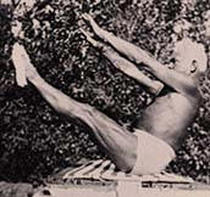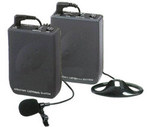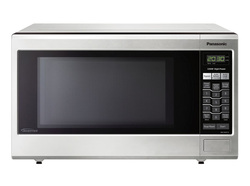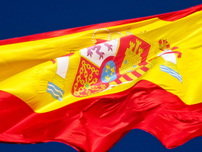- Home
- Videos
- Links
- Working with Interpreters
- Favorite Products
-
Newsletters
- December 2017
- December 2014
- June 2014
- March 2014
- December 2013
- November 2013
- October 2013 Newsletter
- July 2013 Newsletter
- June 2013 Newsletter
- March 2013
- February 2013
- January 2013
- December 2012
- November 2012
- October 2012
- September 2012
- August 2012
- July 2012
- June 2012
- May 2012
- April 2012
- March 2012
- February 2012
- January 2012
- November 2011
- October 2011
- September 2011
- August 2011
- July 2011
- March 2011
- February 2011
- January 2011
- October 2010
- September 2010
- May 2010
- April 2010
- March 2010
- September 2009
- May 2009 Remastered
- April 2009 Remastered
- February 2009 Remastered
- Healthy Body and Soul
- Upcoming Seminars
- More...
- COVID info for Medical interpreters
March 2013 Newsletter
In this edition:
The Bar and the Bar Exam
History of the Lawyer-Profession
Science Bits: How Consecutive Interpreting Equipment Works and
Why You Can't Put Metal in the Microwave
Health Body and Soul: What is "Pilates"
Etymology of the term "Patria Potestad"
Glossary of Terms
This Month's Favorite Links
The Bar and the Bar Exam
History of the Lawyer-Profession
Science Bits: How Consecutive Interpreting Equipment Works and
Why You Can't Put Metal in the Microwave
Health Body and Soul: What is "Pilates"
Etymology of the term "Patria Potestad"
Glossary of Terms
This Month's Favorite Links
|
Feliz primavera a todos. This month we had a productive meeting. Unfortunately Alina was unable to join us due to a busy Wednesday court calendar. This is why I have decided to move our meetings to the 3rd Friday of every month instead of the 3rd Wednesday. Catalina and Richard were at the Brew-Haha and we were joined by a prospective Mandarin Chinese interpreter and a prospective Spanish interpreter and his lovely wife. We talked about the history of the lawyer-profession, how judges who are trained in working with interpreters are able to steer a hearing in order to keep the interpretation accurate and complete, and we briefly discussed interpreting as a team during a trial. The aspiring interpreters brought with them very interesting questions that made the more veteran interpreters think and recall our humble beginnings. These subjects are developed further in this newsletter and much more exciting information has been added. Please remember that we are now meeting on the 3rd Friday of every month. See you April 19th! Jennifer History of the Lawyer-Profession Emperor Claudius
Early Roman advocates were trained in rhetoric, not law, and the judges before whom they argued were not trained in law either. A law enacted in 204 BC barred Roman advocates from taking fees, but the law was widely ignored. Any citizen could call himself an advocate or a legal expert, though whether people believed him would depend on his reputation. This changed once Claudius legalized the legal profession. The ban on fees was abolished by Emperor Claudius, who legalized advocacy as a profession and allowed the Roman advocates to become the first lawyers who could practice openly, although he also imposed a fee cap. In Ancient Greece, the earliest people who could be described as "lawyers" were probably the orators of ancient Athens. However, Athenian orators faced serious structural obstacles. First, there was a rule that individuals were supposed to plead their own cases, which was soon bypassed by the increasing tendency of individuals to ask a friend for assistance. Unlike Athens, Rome developed a class of specialists who had knowledge of the law, known as jurisconsults. These were wealthy amateurs who dabbled in law as an intellectual hobby. They gave legal opinions (responsa) on legal issues to all comers (a practice known as publice respondere). Roman judges and governors would routinely consult with an advisory panel of jurisconsults before rendering a decision, and advocates and ordinary people also called upon jurisconsults for legal opinions. Healthy Body and Soul

What is "Pilates" "Pilates" is a form of exercise, developed by Joseph Pilates, which emphasizes the balanced development of the body through concentration, control, centering, efficiency of movement, precision, and breathing, and aims for elegant sufficiency of movement. Joseph Humbertus Pilates was a man who believed completely in his method and practiced what he prescribed to others well into his eighties. As a young man, Joseph boxed, and taught self-defense. In 1912 he moved to England where he continued to box and teach self-defense at police schools and Scotland Yard. When Britain entered World War I, his German citizenship led to his imprisonment along with other German nationals as “enemy aliens.” During his imprisonment Joseph taught his exercises to fellow compatriots, and later he acted as a nurse-physiotherapist of sorts. Here he developed the first concepts for his innovative machines by disassembling the camp bunk beds and using the springs as a form of resistance to rehabilitate the injured and bed-ridden.He immigrated to New York, and on the boat met Clara, a nurse. The two married and founded a studio that taught his developing method, “Crontology.” Joseph and Clara taught their method of using the mind to control the muscles to a devout following in New York. Local dancers came regularly to heal injuries quickly and improve their strength while maintaining their flexibility. George Balanchine and Martha Graham became devotees to Joseph Pilates’ method. For more information click below: My very patient and very talented Pilates Instructor The Pilates Method Alliance Potestad y Patria Potestad

Potestad es un concepto que deriva del término latino potestas. Potestas es un termino latino que significa poder o facultad. Es un concepto importante en el derecho romano. La noción permite nombrar al mando, la superioridad, el imperio y la autoridad que alguien dispone sobre otra persona o sobre alguna cosa. Potestad es un término jurídico que contiene un concepto híbrido entre poder, derecho y deber. La potestad supone una derivación de la soberanía y coloca a su titular en una posición de superioridad, lleva implícita una capacidad de fuerza.
La potestad es un derecho. Le faculta legalmente para hacer ciertas cosas. Se entiende a la potestad como un derecho de aquel que la dispone. Esto quiere decir que la ley habilita a un individuo o un organismo a hacer algo gracias a la potestad en cuestión. La potestad es un poder, porque quien la ostenta puede normalmente hacer uso de la fuerza para ejercerla. Por ello se atribuye normalmente a alguna autoridad. La potestad es un deber, porque la persona que la ostenta está obligada a ejercerla, y no se puede rechazar. Lo habitual es que la potestad sea una característica de entes de derecho público (la administración, el ministerio público, etc.), pero también se utiliza el término en derecho privado. El caso más emblemático es el de la patria potestad, que es un derecho-deber irrenunciable que los padres ostentan frente a la tenencia legal de sus hijos. El termino patria tiene su origen del latín patrius referente al padre o padres. A diferencia de potestad judicial, la noción de patria potestad se vincula a las obligaciones y los derechos que los padres tienen sobre sus descendientes cuando los hijos no alcanzaron la mayoría de edad o sufren una incapacidad. Si el Estado advierte que los padres no garantizan la protección de los intereses de sus hijos, pueden quitarle la patria potestad. |
|





